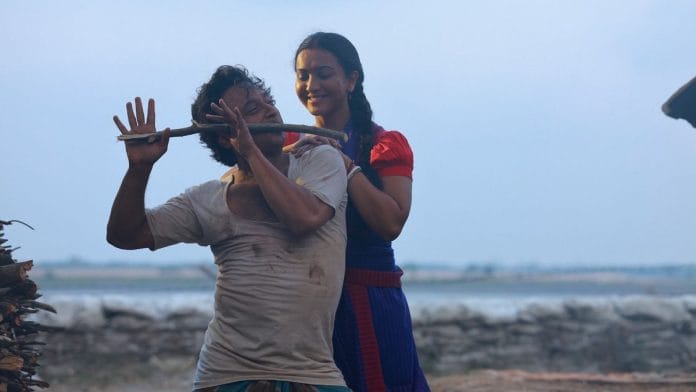Kolkata: Nanichora Das Baul becomes someone new every day—Shiva or Parvati, Durga or the demon king, even a skeleton sometimes. As one of Bengal’s few remaining bohurupis—quick-change artists who travel from village to village performing mythological skits—Baul keeps an ancient tradition alive. But now, both Baul and this fading art form are making it to the big screen, thanks to the upcoming Bengali blockbuster Bohurupi.
Set for a Durga Puja release this October, the film features some of the top names in Tollywood, including Abir Chatterjee, Shiboprosad Mukherjee, and Ritabhari Chakraborty. It’s a thrilling caper about a Bohurupi-turned-master bank robber who uses his talent for disguise to pull off daring heists.
But it’s Baul—the real-life bohurupi—who stands out behind the scenes, having composed, sung, and written lyrics for the film’s music. He even makes a guest appearance on screen.
One of his songs, ‘Shimul Polash’, sung with Shrestha Das and co-composed by Bonnie Chakraborty, is already a hit, with over 5 lakh views on YouTube in just six days. Even Grammy-winning composer AR Rahman shared the song on X and wished the team good luck.
For Baul—whose real name is Noni Chora Chaudhury Byadh, and who is both a bohurupi and a Baul singer—this film is a rare chance to bring visibility to a tradition that’s on the verge of extinction.
Talking to ThePrint over the phone from his house in Bisoypur village in West Bengal’s Birbhum district, he said being part of the film is a matter of pride not just for him but the other 107 bohurupis in his village. For generations, they have been sidelined by society’s indifference to this ancient art form, yet they have persevered.
“I have old parents, a wife, two young daughters, and a younger brother to feed. It is not easy making a living as a bohurupi in today’s Bengal,” Baul said. “There are so many new avenues for entertainment to take away people’s attention. But I cannot give up what generations of my family have done for a living.”
Also Read: The Bengali mother is finding her voice in movies. No longer a martyr
The bohurupi in ‘Bohurupi’
Like Nanichora Das Baul, the lead character in Bohurupi is a bohurupi—but with a twist. He’s also a dangerous bank robber who uses his shape-shifting skills to carry out daredevilish bank heists.
Not only that, the film, directed by Nandita Roy and Shiboprosad Mukherjee, claims to be inspired by real events.
“The film is based on the true story of an infamous bank robber who carried out a series of daring heists by becoming different personas during 1998 and 2005. At one level, the film is a cat-and-mouse game between a cop and a bohurupi,” said the film’s creative producer Zinia Sen. “It took us more than six months to develop the story and write the script.”
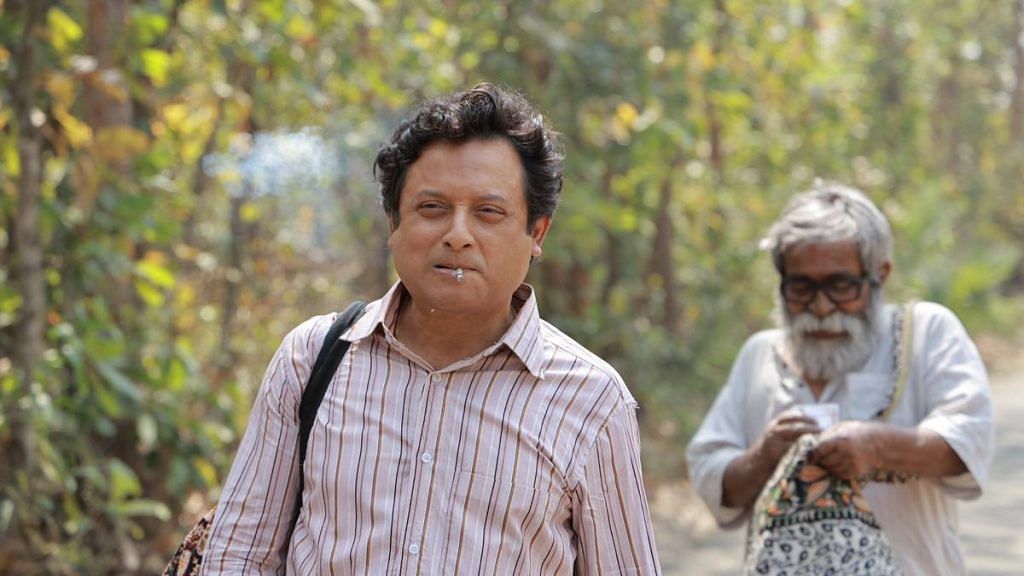
Shiboprosad Mukherjee, who co-directed the film and plays the lead, had to drastically reduce his weight to fit into the role of the bohurupi.
“That apart, I had to learn the unique Bohurupi dialect to bring the character as close to reality as possible, Mukherjee told ThePrint. “I had to match the real-life bohurupis you will get to see in the film, like Nanichora Das Baul.”
Although the film is an action thriller, Mukherjee is also hopeful that it will bring widespread awareness about Bengal’s almost–forgotten art form.
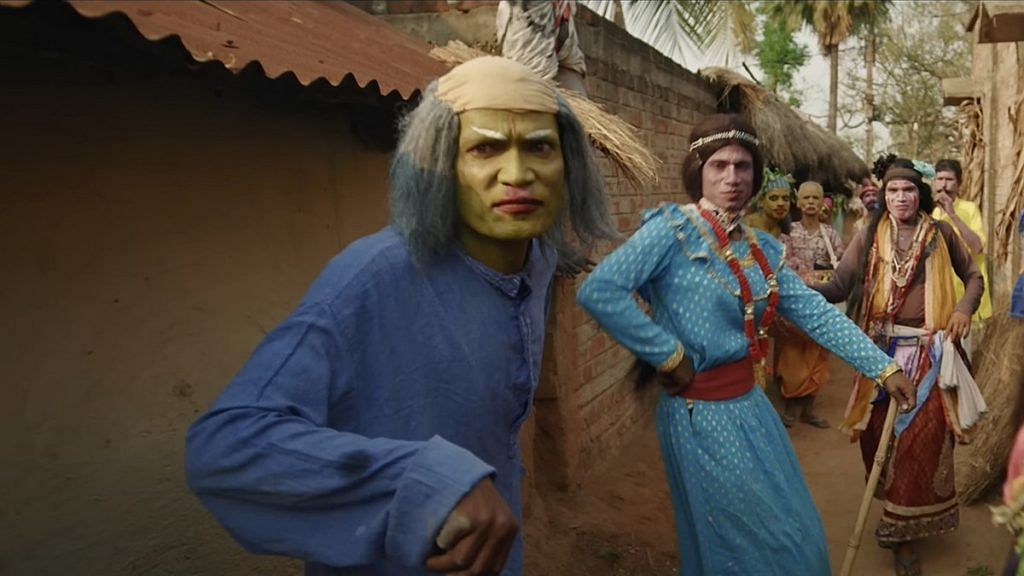
“We spent many days in the interiors of Bengal with bohurupis. These are artistes who are pushed to the margins of society. When the Spanish OTT series Money Heist was released, the masks the robbers wore became a global hit. Here in Bengal, we have our very own quick-change artistes who no one talks about,” he said.
Nandita Roy and Shiboprosad Mukherjee’s last directorial venture Raktabeej, released in October 2023, explored growing Islamic radicalisation in West Bengal and struck a chord with the Bengali audience for highlighting a subject that has become a political rallying point. Apart from the story, what stood out in the film was the way the director duo captured the Bengali countryside. With Bohurupi, they have done the same, taking their cinematic lens outside Kolkata—a rarity among Tollywood directors, who usually keep their focus on the city.
Also Read: Bangladesh crisis hits West Bengal film industry. Cross-border projects in limbo
‘Give us a stage’
With the cameras packed up and Bohurupi wrapped, Nanichora Das Baul has returned to his daily life as a traditional performer.
“My day starts early, at 7 am. Depending on who I become, it takes me anything from 1.5-3 hours to prepare,” he said. “It takes more time to become a female character, like Durga or Putana raksashi. I have to prepare myself as I have to also speak like a woman. It is easier to play Shiv than Parvati.”
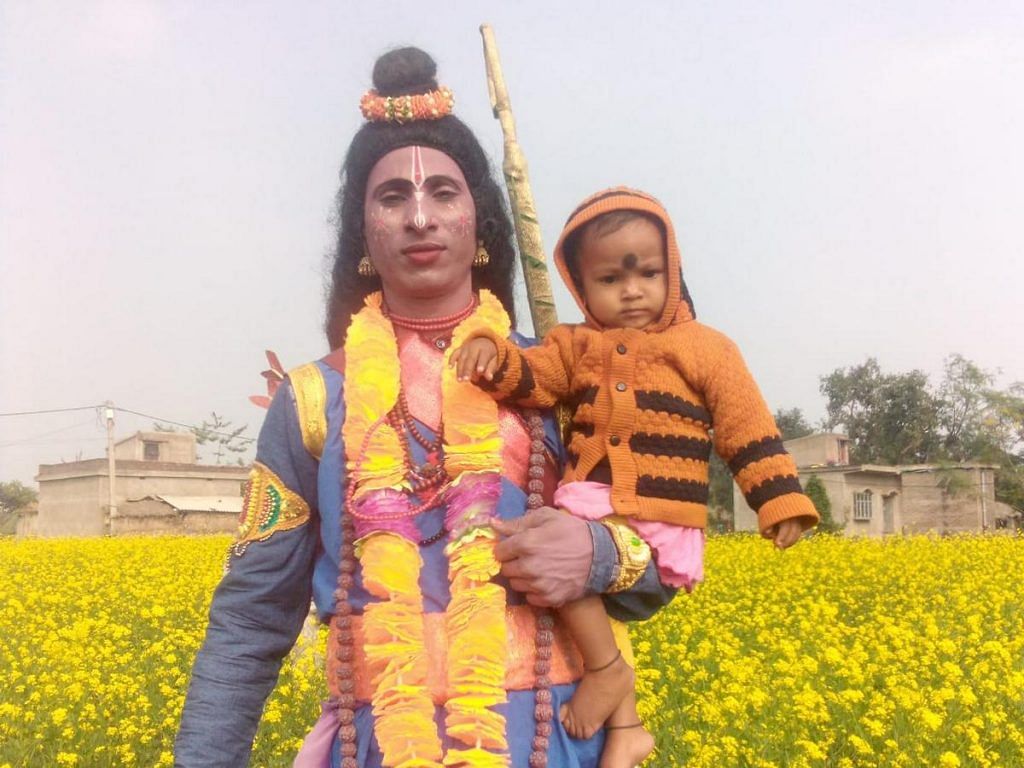
On some days, Baul is just a skeleton—a disguise that grabs plenty of attention—walking from village to village and trying not to scare children away. But there are fewer takers now.
“There was a time when many villages in West Bengal had practitioners of this art form. Now our number is reduced drastically. Bisoypur is one of the few bohurupi villages left,” he said.
The lack of visibility and patronage for bohurupis is not just due to modern, on-demand entertainment but also rooted in caste and rural bias, according to Satanik Pal, a doctoral candidate in comparative Asian studies at the National University of Singapore.
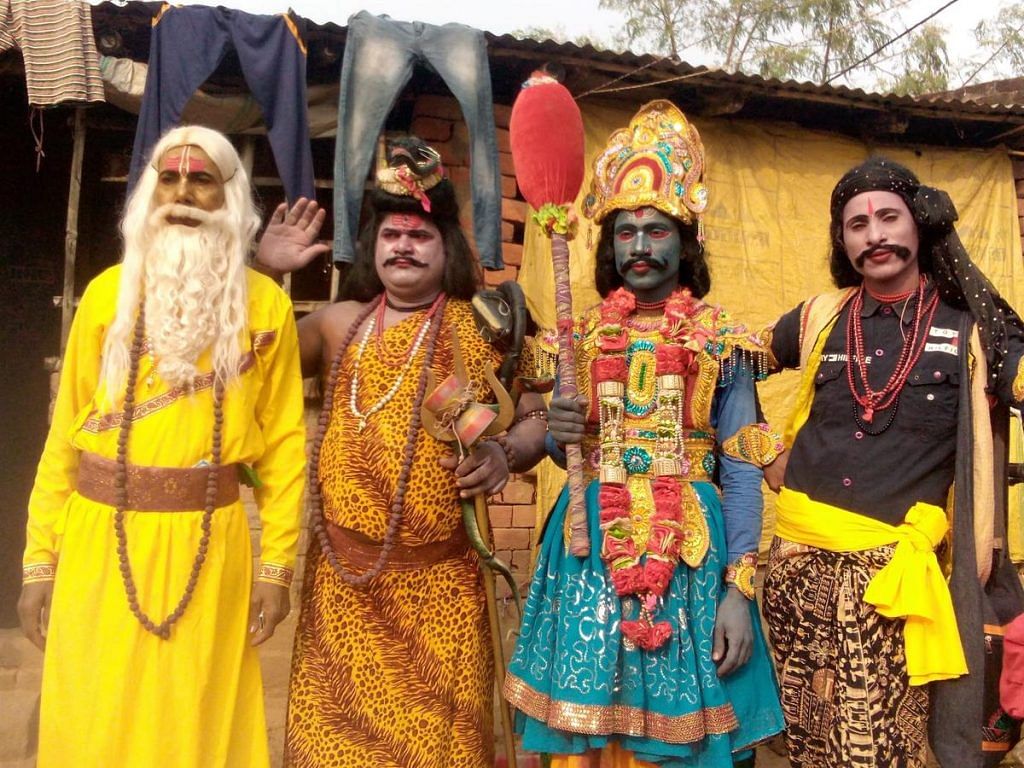
“Bohurupis were once used by the British as spies because of their shape-shifting abilities. Even now, they are used by political parties to canvas for votes. But they have been given short shrift by the Kolkata bhadralok who would rather watch a sanitised play at an urban theatre,” Pal said.
Whether it’s bohurupi performances or Chhou dance, many indigenous art forms have been relegated to the fringes in Bengal because of “caste apathy”, he added.
There is no documentation about the origins of the Bohurupi art form, but it likely began as a form of entertainment for undivided Bengal’s aristocrats, Pal said.
“But today, bohurupis have been reduced to begging for a living,” he rued.
For Baul, the film Bohurupi is a chance to revive interest in the craft and give performers the platform they have been denied for so long.
“The shade of a tree or an empty classroom is all we need to change from one character to another and entertain an entire village,” he said. “Give us a stage and we will enthrall a city.”
(Edited by Asavari Singh)



